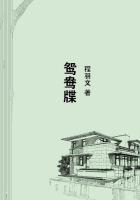I have been studying the bramble-dwellers for seven or eight years and I could not say how many strings of cocoons have passed through my hands. During a recent winter, in view particularly of the distribution of the ***es, I collected some forty of this Osmia's nests, transferred their contents into glass tubes and made a careful summary of the ***es. I give some of my results. The figures start in their order from the bottom of the tunnel dug in the bramble and proceed upwards to the orifice. The figure 1 therefore denotes the first-born of the series, the oldest in date; the highest figure denotes the last-born. The letter M, placed under the corresponding figure, represents the male and the letter F the female ***.
1 2 3 4 5 6 7 8 9 10 11 12 13 14 15
F F M F M F M M F F F F M F M
This is the longest series that I have ever been able to procure. It is also complete, inasmuch as it comprises the entire laying of the Osmia. My statement requires explaining, otherwise it would seem impossible to know whether a mother whose acts one has not watched, nay more, whom one has never seen, has or has not finished laying her eggs. The bramble-stump under consideration leaves a free space of nearly four inches above the continuous string of cocoons. Beyond it, at the actual orifice, is the terminal stopper, the thick plug which closes the entrance to the gallery. In this empty portion of the tunnel there is ample accommodation for numerous cocoons. The fact that the mother has not made use of it proves that her ovaries were exhausted; for it is exceedingly unlikely that she has abandoned first-rate lodgings to go laboriously digging a new gallery elsewhere and there continue her laying.
You may say that, if the unoccupied space marks the end of the laying, nothing tells us that the beginning is actually at the bottom of the cul-de-sac, at the other end of the tunnel. You may also say that the laying is done in shifts, separated by intervals of rest.
The space left empty in the channel would mean that one of these shifts was finished and not that there were no more eggs ripe for hatching. In answer to these very plausible explanations, I will say that, the sum of my observations--and they have been extremely numerous--is that the total number of eggs laid not only by the Osmiae but by a host of other Bees fluctuates round about fifteen.
Besides, when we consider that the active life of these insects lasts hardly a month; when we remember that this period of activity is disturbed by dark, rainy or very windy days, during which all work is suspended; when lastly we ascertain, as I have done ad nauseam in the case of the Three-horned Osmia, the time required for building and victualling a cell, it becomes obvious that the total laying must be kept within narrow bounds and that the mother has no time to lose if she wishes to get fifteen cells satisfactorily built in three or four weeks interrupted by compulsory rests. I shall give some facts later which will dispel your doubts, if any remain.
I assume, therefore, that a number of eggs bordering on fifteen represents the entire family of an Osmia, as it does of many other Bees.
Let us consult some other complete series. Here are two:
1 2 3 4 5 6 7 8 9 10 11 12 13
F F M F M F M F F F F M F
F M F F F M F F M F M
In both cases, the laying is taken as complete, for the same reasons as above.
We will end with some series that appear to me incomplete, in view of the small number of cells and the absence of any free space above the pile of cocoons:
1 2 3 4 5 6 7 8
M M F M M M M M
M M F M F M M M
F M F F M M
M M M F M
F F F F
M M M
F M
These examples are more than sufficient. It is quite evident that the distribution of the ***es is not governed by any rule. All that I can say on consulting the whole of my notes, which contain a good many instances of complete layings--most of them, unfortunately, spoilt through gaps caused by parasites, the death of the larva, the failure of the egg to hatch and other accidents--all that I can say in general is that the complete series begins with females and nearly always ends with males. The incomplete series can teach us nothing in this respect, for they are only fragments starting we know not whence; and it is impossible to tell whether they should be ascribed to the beginning, to the end, or to an intermediate period of the laying. To sum up: in the laying of the Three-pronged Osmia, no order governs the succession of the ***es; only, the series has a marked tendency to begin with females and to finish with males.
The brambles, in my district, harbour two other Osmiae, both of much smaller size: O. detrita, PEREZ, and O. parvula, DUF. The first is very common, the second very rare; and until now I have found only one of her nests, placed above a nest of O. detrita, in the same bramble. Here, instead of the lack of order in the distribution of the ***es which we find with O. tridentata, we have an order remarkable for consistency and simplicity. I have before me the list of the series of O. detrita collected last winter. Here are some of them:
1. A series of twelve: seven females, beginning with the bottom of the tunnel, and then five males.
2. A series of nine: three females first, then six males.
3. A series of eight: five females followed by three males.
4. A series of eight: seven females followed by one male.
5. A series of eight: one female followed by seven males.
6. A series of seven: six females followed by one male.
The first series might very well be complete. The second and fifth appear to be the end of layings, of which the beginning has taken place elsewhere, in another bramble-stump. The males predominate and finish off the series. Nos. 3, 4 and 6, on the other hand, look like the beginnings of layings: the females predominate and are at the head of the series. Even if these interpretations should be open to doubt, one result at least is certain: with O. detrita, the laying is divided into two groups, with no intermingling of the ***es; the first group laid yields nothing but females, the second, or more recent, yields nothing but males.















